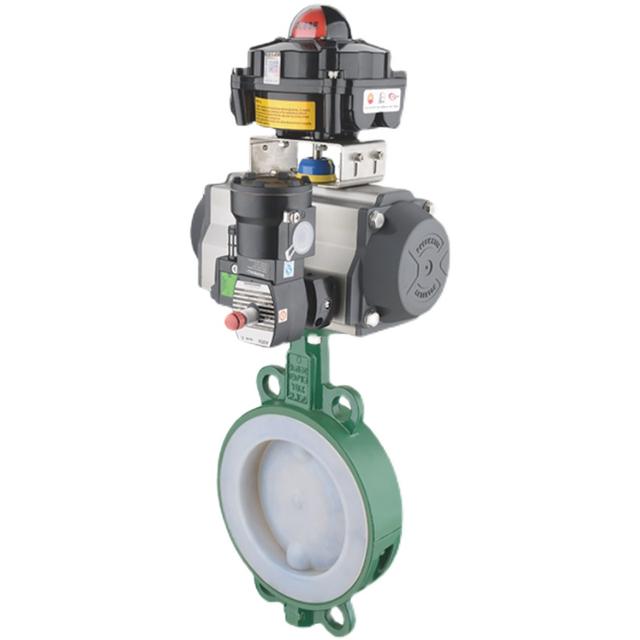Pneumatic fluorine lined butterfly valve is matched with ASCO explosion-proof solenoid valve. This configuration is typically used for special industrial applications that require fluid control, such as handling corrosive media or operating in hazardous environments.

The following are the general configuration steps:
Choose the appropriate ASCO explosion-proof solenoid valve: Select the appropriate ASCO explosion-proof solenoid valve based on your application needs and environmental requirements. Ensure that the selected solenoid valve has the appropriate explosion-proof rating and characteristics suitable for your working environment. You may need to consult ASCO's product catalog or contact their sales team for advice.
Determine the specifications of the pneumatic fluorine lined butterfly valve: Choose the appropriate pneumatic fluorine lined butterfly valve to ensure that its size, material, and design meet your fluid control needs. Fluorine lined materials are crucial as they provide protection against corrosive media.
Installation and Connection: Install ASCO explosion-proof solenoid valve and pneumatic fluorine lined butterfly valve, and ensure that they are properly connected. This may involve the installation of pipelines, joints, and other connecting components.
Electrical and Pneumatic Control: Configure electrical and pneumatic control systems to remotely control the operation of ASCO solenoid valves and ensure that butterfly valves can be opened and closed as needed. This may involve the use of devices such as pneumatic control panels, sensors, and switches.
Testing and maintenance: Conduct system testing before starting operation to ensure everything is running smoothly. Regular maintenance of the system is also necessary to ensure its long-term stable operation.
It should be noted that your configuration complies with safety standards and regulations, especially when operating in hazardous environments. In addition, it may be necessary to collaborate with professional engineers or technicians to ensure the correct design and operation of the system.